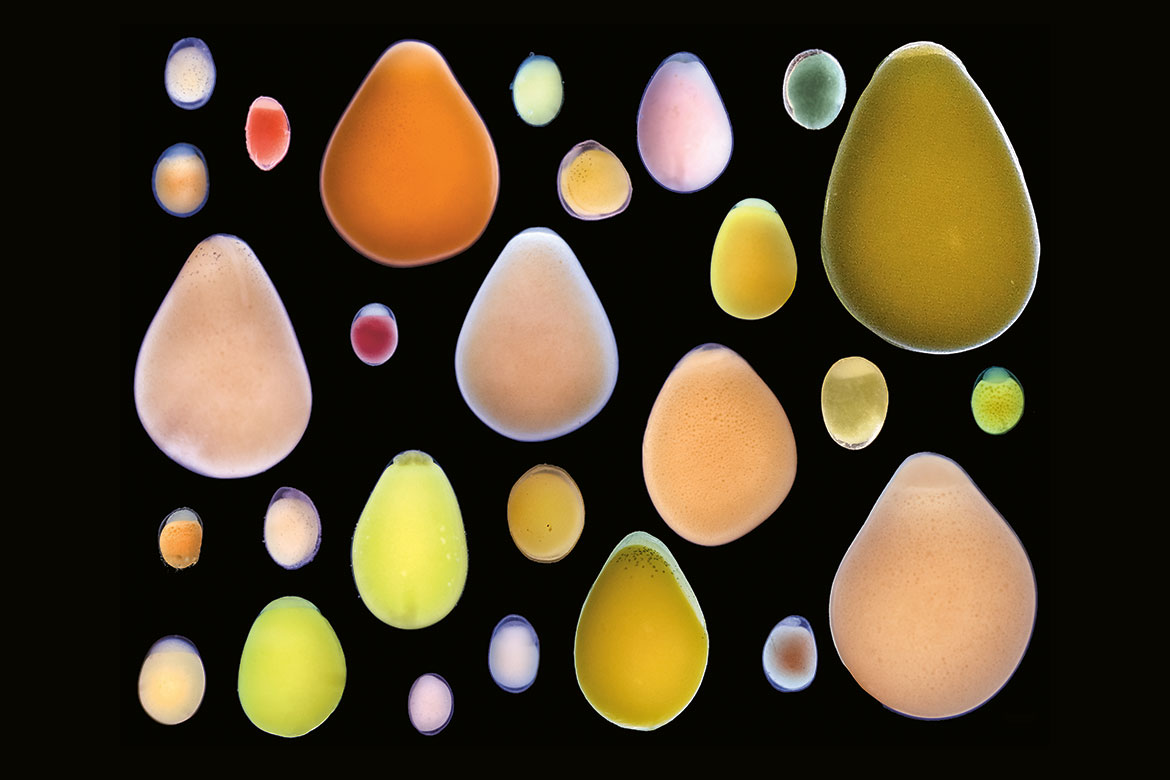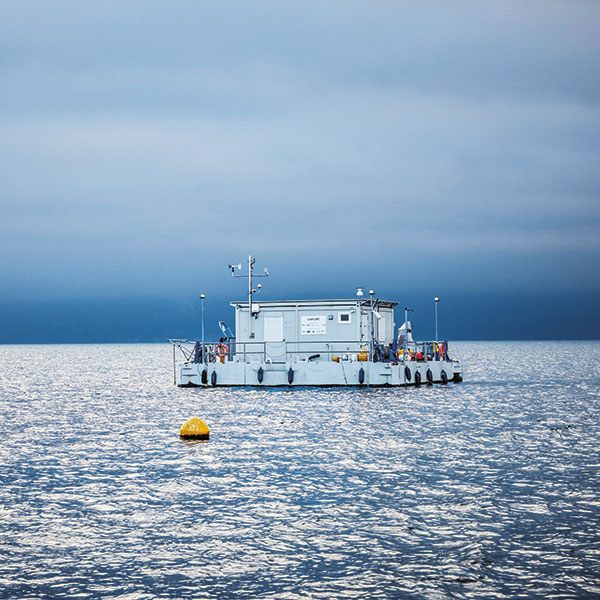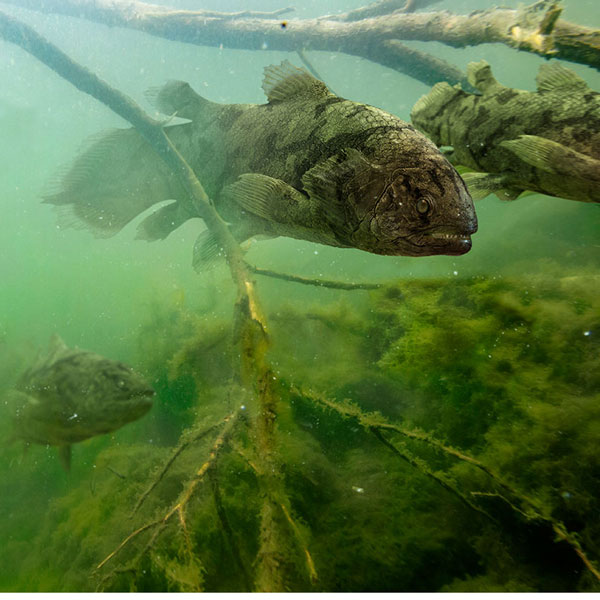In the picture
Fishing for biodiversity
Gathered from rocks under water, then analysed in an on-site lab, cichlid eggs offer researchers a window onto evolution.

Cichlid eggs from Lake Tanganyika in East Africa reveal an astonishing variety of colours. | Photo: Grégoire Vernaz
This photograph, entitled ‘Kaleidoscope of biodiversity’, was taken by Grégoire Vernaz and Anja Haefeli of the University of Basel and looks for all the world like an Easter card. In fact, it shows cichlid eggs from Lake Tanganyika in East Africa. Over the past 9.7 million years, over 241 different species have developed there.
“These eggs are like a window onto evolution – even right at the beginning of their development, they reveal differences that will later lead to new species”, says Vernaz. “We were completely surprised by how diverse these eggs were, even among closely related species – and not just in their colour, but also in terms of their shape and size”.
Their fieldwork in Tanzania and Zambia wasn’t without its hairy moments. “During one dive, we saw a rock covered in eggs – and a huge fish suddenly came straight at us like a predator”, says Vernaz. But they were still able to take samples and examine them in their on-site laboratory.
They also needed to put in extraordinary hours to ensure that their eggs were as fresh as possible. “Many species reach the stage of development that we need in the middle of the night”, says Haefeli, “so sometimes I was still working at two in the morning”.
The eggs in the picture vary in size from 1.1 mm to 6 mm in length. “We photographed all of them at a very early stage of their development, within the first three days after fertilisation”, says Vernaz. The composition of their photo was inspired by iconic images of assorted bird eggs from historical nature drawings. “We too wanted to show something like that”, says Vernaz.
But it’s a mystery to them why the egg casings are so colourful. Perhaps it’s due to the fishes’ diet, or perhaps the colours are intended as camouflage in their respective environments, helping to prevent them from being seen against their background. Either way, one thing is clear to Vernaz: “These fish are not just beautiful. They are perfect ambassadors for evolutionary processes and for the necessity of protecting fragile ecosystems”.



